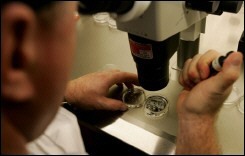OF THE
TIMES
Briefly stated, the Gell-Mann Amnesia effect is as follows. You open the newspaper to an article on some subject you know well... You read the article and see the journalist has absolutely no understanding of either the facts or the issues. Often, the article is so wrong it actually presents the story backward—reversing cause and effect...
In any case, you read with exasperation or amusement the multiple errors in a story, and then turn the page to national or international affairs, and read as if the rest of the newspaper was somehow more accurate about Palestine than the baloney you just read. You turn the page, and forget what you know.
This crap just came out? After how many meetings I wonder over what time span? Whoever came up with it is far behind the times..... I doubt it is...
A few links for consideration from Lew Rockwell this morning: [Link] - The Heroic Anti-War Students [Link] - The Youth Are Precious There are some...
When in health, electricity, CHI, flows ORGANically. NatureAL. Ditch SUGAR.
VisitBritain needs to man up and call a powwow of its minority gurus of language so that they can walkthrough these lame guidelines with a sanity...
Current Lithium Mining in the world , produces 130,000 tonnes every year. An EV battery contains ~30lbs of lithium. Convert 1 metric ton to pounds...
To submit an article for publication, see our Submission Guidelines
Reader comments do not necessarily reflect the views of the volunteers, editors, and directors of SOTT.net or the Quantum Future Group.
Some icons on this site were created by: Afterglow, Aha-Soft, AntialiasFactory, artdesigner.lv, Artura, DailyOverview, Everaldo, GraphicsFuel, IconFactory, Iconka, IconShock, Icons-Land, i-love-icons, KDE-look.org, Klukeart, mugenb16, Map Icons Collection, PetshopBoxStudio, VisualPharm, wbeiruti, WebIconset
Powered by PikaJS 🐁 and In·Site
Original content © 2002-2024 by Sott.net/Signs of the Times. See: FAIR USE NOTICE

Reader Comments
to our Newsletter